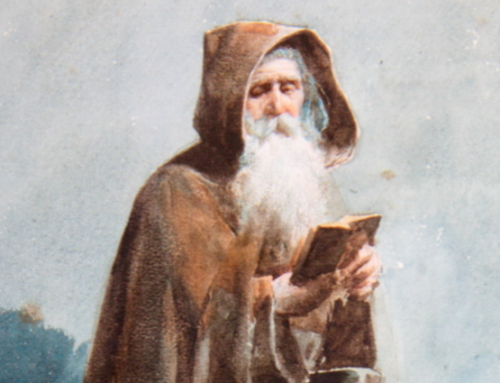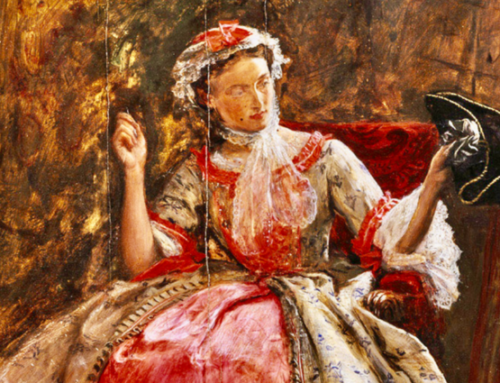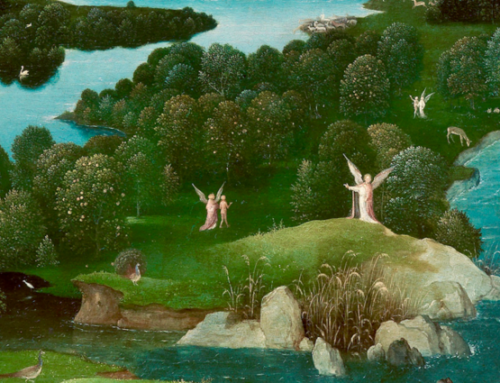American Conservatism: An Encyclopedia, ISI Books, 2006.
Left-wing intellectuals have an irritating habit of trying to define conservatism as a mental illness: as the fruit of an “authoritarian personality” in Theodor Adorno’s famous formulation, or as the unfortunate consequence of neuroses rooted in “fear and aggression, dogmatism and the intolerance of ambiguity,” as a group of Berkeley psychologists recently claimed. While these forays into political psychoanalysis are risible on their face, the more modest observation that America’s brightest conservatives can be somewhat, shall we say, eccentric is rather more persuasive, as anyone who has spent time in right-of-center circles can attest.
“It would take a comic genius, an American Aristophanes, to capture the strangeness of this little world,” Mark Lilla wrote recently of neoconservative Washington, where a typical social gathering mixes “older New York intellectuals, professors in exile from politically correct universities, economic visionaries, Teddy Roosevelt enthusiasts, home-schooling advocates, evangelical Protestants, Latin-mass Catholics, Likudniks, and personalities from shock radio.” And these are the neocon gatherings, mind you, the closest thing the American Right has to an in-crowd.
It comes as no surprise, then, that American Conservatism: An Encyclopedia—an enormously impressive and occasionally frustrating volume that attempts to do for the American Right what the 1911 Britannica does for the rest of God’s creation— sometimes feels like a compendium of cranks, an almanac of oddballs, a parade of “beautiful losers,” to borrow Sam Francis’s description of his fellow conservatives. Dipping in and out of its pages, the reader will encounter such figures as Isabel Paterson, a Canadian-born libertarian who ended her relationship with National Review because she was “angered by a slight editorial change in a book review she had written” (she died two years later, the entry notes, and was “buried in an unmarked grave”); Donald Atwell Zoll, a “sentimental monarchist” whose academic progress was cut short by the revelation that he lacked a doctorate, and who thereafter embarked on a second career as an elephant trainer; and Westbrook Pegler, a muckraker of the 1930s and 1940s who “drifted from a conservative suspicion of big-government intrusiveness…into mere abusiveness, eventually being sued for libel and concluding his career by writing for two little-known Southern publications.”
These shades of conservatism past appear alongside better-remembered Right Minds such as L. Brent Bozell, William F. Buckley’s brother-in-law and the ghostwriter of Conscience of a Conservative, whose admiration for an impossibly romanticized Catholic Spain seemed at times to outstrip his devotion to America; Willmoore Kendall, whose turbulent Ivy League career ended when “he reached an agreement with Yale whereby he would be paid five times his salary” in return for resigning his tenure; Sam Francis himself, a brilliant writer who migrated to the racist fringe and died a self-identified “white nationalist”; and of course Ayn Rand, whose personal eccentricities need no introduction.
After a while, the reader becomes accustomed to the melancholy that works its way into so many entries—[he] began to suffer from bipolar disorder…he was predisposed to a sense of cosmic failure, a belief that the universe was running down…suffering from chronic depression, [he] committed suicide… he is now largely shunned by the literary establishment—and accustomed, as well, to the feuds and enmities that run throughout, like threads binding the book together: paleocons versus neocons; libertarians versus social conservatives; West Coast Straussians versus East Coast Straussians; Confederate sympathizers versus Lincolnophiles; Whittaker Chambers versus Ayn Rand; Norman Podhoretz versus Joe Sobran; Murray Rothbard versus, well, just about everybody.
Conservatives have often pointed to these disagreements as signs of the Right’s intellectual health, its devotion to ideas and to spirited debate, no matter where the argument might lead. And so they are. But they are also symptomatic of conservatism’s marginal status in American intellectual life, and the fractiousness that afflicts any movement that has spent most of its time on the outside looking in. The “conservative intellectual” may not be an oxymoron, but he is of necessity a contrarian, a member of an “ism” defined less by what it affirms than by a shared opposition to whatever the liberal establishment defines as Progress.
Thus, this Encyclopedia is an ecumenical volume, both in the entries the editors have selected and the generosity with which each topic is approached. A sympathetic author is typically allowed to make the case: George Weigel writes on Michael Novak and Murray Rothbard tackles Ludwig von Mises; Paul Gottfried explains paleoconservatism and Bruce Bartlett handles supply- side economics; the Cato Institute’s David Boaz explicates “libertarianism” while the agrarian conservative Caleb Stegall meditates on “community.” Occasionally this sympathy goes a bit far (I could have done with a slightly more negative assessment of the Christian Reconstructionist guru Rousas John Rushdoony, for instance) and occasionally it runs to laziness: some of the shorter entries—on Dinesh D’Souza, say, or David Horowitz— read as though they could have been cutand-pasted from an “author bio” page on the subject’s website. But for the most part the authors strike a fine balance, avoiding a dull, self-conscious neutrality without letting their enthusiasms carry them away. And while the editors obviously have a slight bias toward the traditional as opposed to the neoconservative Right, that’s surely appropriate in a volume that seeks to cover the history of a persuasion to which the neocons are distinct latecomers.
Yet any volume that includes favorable “conservative” assessments of Abraham Lincoln and Jefferson Davis, or Theodore Roosevelt and William Jennings Bryan (not to mention Mel Bradford and Bill Bennett, or Richard John Neuhaus and David Schindler, to pick figures of more recent vintage) inevitably leaves the reader somewhat baffled as to what, precisely, American conservatism is. More baffling still, in the aftermath of what was supposedly an age of right-wing ascendancy, is how a church as broad, fragmented, and defiantly outsider-ish as the American Right ever succeeded in wresting the reins of government from its liberal adversaries.
The first question I will leave to braver minds to wrestle with, but the pattern of this Encyclopedia suggests a possible answer to the second. The editors note in the introduction that they are primarily concerned with figures and events that shaped postwar conservatism, and the entries they have assembled confirm their judgment that the decade after 1945 marked the great turning point for the American Right. This was the era when Russell Kirk wrote The Conservative Mind, of course, and Bill Buckley founded National Review, the milestones that conservatives usually mention when charting their movement’s climb from obscurity to power. But important as books and magazines were to the genesis of modern conservatism, the crucial development may have been practical rather than intellectual.
Prior to World War II, this Encyclopedia reminds its readers, the intellectual Right often disdained to dirty its hands with the mud of popular politics, preferring to cultivate a genteel Anglophilia or nostalgia for the Old Confederacy. (The latter, not coincidentally, was the only corner of American civilization where the Right could claim to be the Establishment, rather than its opposition). Populism was populism, and conservatism was conservatism, and never the twain should meet. You didn’t find Irving Babbitt writing speeches for William Jennings Bryan, say, or Albert Jay Nock advising Huey Long’s campaigns. From the 1950s onward, by contrast, conservative thinkers stooped to conquer, descending from the empyrean heights to make common cause with the country’s political outsiders—disempowered Middle Americans— and riding populism to the halls of power.
This development was by no means inevitable. In the late 1940s, Peter Viereck and his well-mannered “New Conservatism” seemed poised to carry the above-the-fray tradition forward into the postwar era, and the Kirks and Kendalls, the Weavers and Voegelins could have easily become another generation of conservatives content to describe the world rather than change it. But William F. Buckley interposed himself—Buckley, who was as patrician as any previous right-wing man of letters, but who was also willing to champion the common man as few before him ever had.
In this reading, WFB’s most important contribution to modern conservatism was not the founding of National Review, but rather his earlier decision to champion— with reservations, to be sure—the rabblerousing, demagogic Senator Joseph McCarthy, and thus to wed his mind and prose to the politics of middle-class frustration. The Buckley-McCarthy pairing, unlikely as it seemed, set the pattern for the decades that followed, in which conservatism gave populism intellectual weight and populism gave conservatism power, whether it was Bozell ventriloquizing Barry Goldwater, William Safire instilling eloquence in Spiro Agnew, or Ronald Reagan channeling Arthur Laffer and Milton Friedman. For every Middle-American com-plaint, it seemed, there was a right-wing intellectual ready to ground the grievance in a serious critique of modern liberalism and all its works and ways. Thus, supplyside economics for small businessmen who resented punitive taxation; the critique of the “naked public square” for Christians tired of having their faith shunted out of public life; the “tragedy of American compassion” for taxpayers tired of a failing welfare system and the “broken windows” hypothesis for urbanites sick of seeing their cities decay around them; and Reaganite idealism for the silent majority who resented being lectured about the need for peaceful coexistence with an evil empire.
At its headier moments, the era of George W. Bush appeared poised to constitute the apotheosis of this outsiders’ alliance, the moment when it might cease merely to oppose the liberal establishment and become an establishment itself. But what the Bush years have demonstrated is that a movement founded on shared resentments rather than shared goals is better at winning elections than governing once it wins. As long as the dragon of liberalism needed to be slain, the various factions crowding the Encyclopedia kept the peace, but like Anglicans and Puritans in post-Reformation England, they fell to squabbling as soon as the chance presented itself.
These developments make this reference book not simply a work of history but also a map to contemporary Republican politics, since the feuds and controversies that thread their way through its accounting of conservatism’s past have come to dominate conservatism’s present. More discouragingstill, the intellectual Right’s shotgun marriage to populist resentment seems, after fifty fruitful years, to be tugging the conservative mind down into the fever swamps, the land of Sean Hannity and Ann Coulter and their ilk. None of these clamorous performance artists find their way into the pages of the Encyclopedia, but this omission may represent wishful thinking on the editors’ part. I have an uncomfortable suspicion that Ann Coulter’s Treason defines this moment in the history of American conservatism as surely God and Man at Yale (1951) or The Closing of the American Mind (1987) defined theirs.
Worse, Coulterism could easily define the conservative future as well. It is easy to imagine a “conservative” movement sustained for years by grudges and resentments, bigotry and jingoism, its intellectual patrimony long abandoned. Likewise, it is possible to envision a conservatism that takes the failures of the Bush years as a cautionary tale about the corruptions of power and retreats into the twenty-first century equivalent of the monastery, becoming once again a dissent from, rather than a challenge to, regnant liberalism. Indeed, these two visions of the Right’s future are by no means mutually exclusive.
As to whether there is a path between this pair of discouraging possibilities, a way for American conservatism to ground itself in something stronger than a shared antipathy to liberalism and so make another bid to become the philosophical and political foundation of our society: well, that’s a question that only the Encyclopedists of the future can answer.
Books mentioned in this essay may be found in The Imaginative Conservative Bookstore. This was published in the Intercollegiate Review, (Fall, 2007) and appears here with their gracious permission.








Leave A Comment